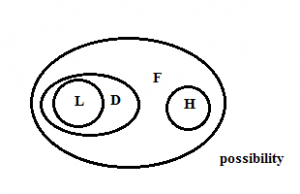Hello Aspirants. Welcome to Online Reasoning Section in AffairsCloud.com. We are providing Free IBPS Clerk course 2015 and creating sample questions in Reasoning, the type of which will be asked in IBPS Clerk Prelims Exam.
Stratus – IBPS Clerk Course 2015

[flipclock]
Directions (Q. 1-5): Study the following information to answer the given questions:
There are seven persons named A, B, C, D, K, L and N who are seated in a straight line facing North in ascending order of their salaries. N earns more than L and D. N earns more than A but he does not earn the highest. A earns more than L. The person who earns the second highest receives a salary of Rs 35,000 while the third lowest earner receives Rs 23,000. K earns less than L but more than D. C earns Rs 18,000.
- Who among the following earn(s) more than 23,000 but less than 35,000?
A) Only A
B) Only L
C) A and L
D) K and L
E) Cannot be determinedC) A and L
Explanation:
We get the order as D K L A N
Now two are left, B and C, it is given that N does not earn the highest and C earns 18000. This implies that B must earn the highest.
Now third lowest earns 23,000 and C earns 18,000, so K should earn 23,000. Final order is
C(18000)/D D/C(18000) K(23000) L A N(35000) B - Who among the following may earn 21,000?
A) K
B) D
C) L
D) C
E) Cannot be determinedB) D
Explanation:
21000 < 23000, so either C or D, but for C 18000 is given, So D – 21000 - Who among the following earns more than K but less than A?
A) C
B) N
C) D
D) L
E) Cannot be determinedD) L
Explanation:
L is in between - Who among the following earns the highest?
A) B
B) N
C) A
D) L
E) Cannot be determinedA) B - Who among the following earns 35,000?
A) N
B) A
C) L
D) B
E) Cannot be determinedA) N
Directions (6 – 10):
(A) only 1st follows
(B) only 2nd follows
(C) either 1st or 2nd
(D) neither 1st nor 2nd
(E) both 1st and 2nd
- Statements: All lions are ducks. No duck is a horse. All horses are fruits
Conclusions:
I. Some fruits are horses
II. All ducks are fruits is a possibility.(E) both 1st and 2nd
Explanation:
I follows from 3rd statement.
For II
- Statements: All bricks are flowers. Some houses are flowers. All pens are houses
Conclusions:
I. Some pens are flowers.
II. No pen is flower(C) either 1st or 2nd Explanation:
Both conclusions are wrong. Subject and predicate in both conc. is same. One is positive and the other negative. So either of two follows. - Statements: Some benches are walls. All walls are houses. Some houses are jungles. All jungles are roads.
Conclusions:
I. Some roads are benches.
II. Some houses are benches(B) only 2nd follows
Explanation:
I is not definite
II follows from first 2 statements. - Statements: Some pianos are violins. Some violins are drums. All drums are guitars. No guitar is a flute.
Conclusions:
I. Some guitars are pianos.
II. Some drums are flutes is a possibility.(D) neither 1st nor 2nd
Explanation:
I is not definite.
II – If some drums are flutes, then some guitars will be flute which is not possible. - Statements: All dials are mirrors. All mirrors are spoons. Some spoons are decks. No spoon is chair.
Conclusions:
I. Some spoons are dials.
II. Some decks are not chairs(E) both 1st and 2nd
Explanation:
In II – All decks are chairs is not a possibility, so II follows



